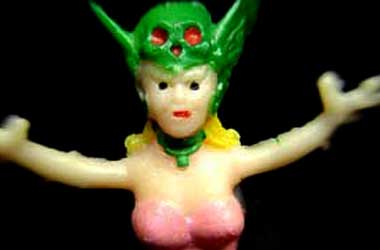
About Premium Blend
Premium Blend is a small design firm located in CT. We've been designing and putting ink on paper and getting paid for it for over 25 years. For the past 15 years we've been pushing pixels around, too.
We're flexible, reasonably priced and we've always got a pot full of ideas and concepts (along with a full pot of coffee).
Contact us here and let's see how we can solve your design problems.
About Premium Blend
Images and text together, that’s what I’ve been interested in most of my life.
One-fifth of Americans are considered functionally illiterate, 21% of the adult population. Source: Julie Farby, All Headline News, “D.C. Literacy Rate Worse Than Rest Of United States,” March 24, 2007
Never married, the 5-foot-3-inch Darger seems to have had only one close friend, William Schloder, with whom he formed the nonfunctional, two-member Children’s Protective Society. (In 1929, Darger expressed genuine bafflement when his offer to adopt a child was turned down by authorities.) He arose before 7:00 and attended Catholic mass regularly-sometimes four or five times a day. Twice, to his exasperation, he was rejected from military service: in 1918 for poor eyesight, in 1945 for age. Though reluctant to engage in conversation, except about the weather (a lifelong preoccupation), he was nevertheless a superb mimic who was sometimes heard to carry on long dialogues in which he played both himself and a cranky nun. From time to time, he was visited by a priest. He kept detailed weather journals in which he impatiently pointed out the errors of forecasters. (On Easter Sunday of 1913, the year he turned 21, Darger watched a tornado devastate the town of Countybrown, Ill.) Other notebooks were devoted to images and written accounts of lethal fires. Occasionally he sang songs with indecipherable lyrics, perhaps in accord with his claim to Brazilian birth. He wore old eyeglasses held together with tape and kept his wallet tied to a shoestring that attached to one belt loop. His wardrobe consisted primarily of shirts with torn-off sleeves for summer, a full-length army overcoat and a cap with ear-flaps for winter. Long a dedicated scavenger (sometimes from neighborhood trash cans), he accumulated large collections of twine, eyeglasses, toys, religious pictures and statuettes, Pepto-Bismol bottles, phonograph records and shoes.
In 1910, at the age of 18, this consummate Outsider had begun to compose — first longhand, later (in 1912 or 1916) with the aid of a primitive manual typewriter (treated as an elevated, spotlit relic in the show) — a fantasy epic that eventually filled 15,145 single-spaced, legal-size pages bound by hand into 15 volumes: The Story of the Vivian Girls, in what is known as The Realms of the Unreal, of the Glandeco-Angelinnian War Storm, caused by the Child Slave Rebellion. By Darger’s own account, composition of the young-girls-in-jeopardy story, with its attendant catalogues of flags, maps, officers, uniforms and battle casualties, took 11 years (thus requiring, by my calculation, an average production of 2,300 words per day, 365 days per year). The massive work, feverishly mixing idealization and sadism, is therefore a product of the celibate Darger’s most sexually volatile years. Late in the process, he decided to illustrate the tale, mostly in three separate albums, eventually producing some 300 pictures, including 87 multi-sheet horizontal panels. This visual project occupied the remainder of his life — he kept dutiful lists of illustrations needed, checking them off as each was completed — while he continued to write voluminously: journals, the fire and weather logs, a novelistic sequel known as The Vivian Girls in Chicago (a haunted-house saga), and the immense and largely fanciful “autobiography” that he began after his retirement in 1963.
–from Thank heaven for little girls – watercolors; Henry Darger; traveling exhibition
Art in America, Jan, 1998 by Richard Vine
